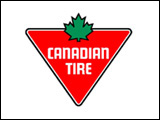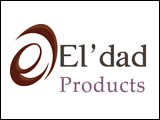Every day our bodies come into contact with skin care products. The average daily routine will include body wash, shampoo, conditioner, face cleanser, toner, moisturizer, lotions and deodorant. Maybe even spot treatments for acne, makeup with multiple products, mousse and hairspray are also part of your routine. You may also use hand sanitizers and hand lotions when you are out and about. With this many different applications, the average woman uses 16 different products per day with 1 out of 100 men using just as many. We often read the claims on the bottles that tell us what the product will do for our hair or skin; however, we may not take the time to read the ingredients that our bodies are absorbing. Our skin contains many tiny pores and capillaries that absorb the products that we apply to our skin, making their way into the bloodstream. Many of the products used daily may contain carcinogens (a substance with the potential to cause cancer) or endocrine (hormone) disruptors such as xenoestrogens that mimic estrogen in the body.
The United States has no cosmetic regulation system in place, however, in Canada we do. Products sold in Canada should be tested and analyzed for consumer safety, and labels or the products themselves may have to be modified to be sold in Canada. There is a “Hotlist” of prohibited ingredients as well as a restricted ingredient list. While this sounds good, there are still many products that are overlooked and do not undergo the inspection that the government says they require. Also, restricted ingredients such as formaldehyde are still used in oral products as a preservative as well as in nail polishes and is a known carcinogen. There are also many ingredients that do not make either list such as parabens and phthalates that are often used as a preservative or in fragrances. Parabens and phthalates are known endocrine disruptors. Phthalates also are behind many scent allergies, dermatitis and respiratory distress. In Canada, the scent or flavour of a product must be labelled as parfum or fragrance without the need of listing the ingredients making up that fragrance. By hiding as parfum or fragrance, phthalates are making their way into our body care products. It is essential to look for paraben and phthalate free products to avoid these harmful chemicals.
Many toxic ingredients may be found by government regulations to be safe in small quantities, however, is the constant application or use of a “relatively safe” ingredients is often overlooked. Remember, many of us are using an average of 16 products per day, sometimes with multiple applications. That small quantity in each product containing a “relatively safe” ingredient may have doubled, tripled or quadrupled in one day, never mind frequent repetitive exposure.
So how do we avoid these harmful products? Read ingredients! Do your homework by looking into your skincare company to find out what their values are and what type of ingredients they are using. Because of Canada cosmetic regulations, all companies have to list scents as parfum or fragrance; however, that scent in many natural products is made up of essential oils or plant extracts. Also, many companies use the scientific name for vitamins or botanicals on their labels so the rule “if you cannot pronounce it, do not use it” does not apply with skin care. Many natural product labels will clarify what they are using, but some may only have that information on their website so doing your homework is crucial. The Environmental Working Group is a not for profit organization that has created an excellent database called Skin Deep to help navigate which products contain harmful toxins and which ones are completely safe for regular use. You can plug in a specific product or ingredient into their search engine, and it will pop up with a safety rating that includes studies and data on its uses and safety.
Reducing chemical exposure through what you put on your skin is just as important as what you put in your mouth. If you are conscientious about the food you eat, you should also take a look at what you put on your skin. If this is the first time you have thought about your skin care products, take a look through what you use and plug it into EWG’s Skin Deep database and see how clean it really is. You are in charge of your health and every little change you make in your food or cosmetic choices can greatly reduce your toxic chemical exposure and lead to better health.



